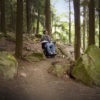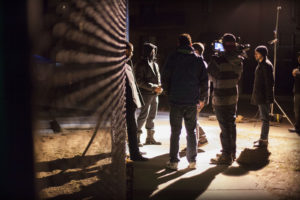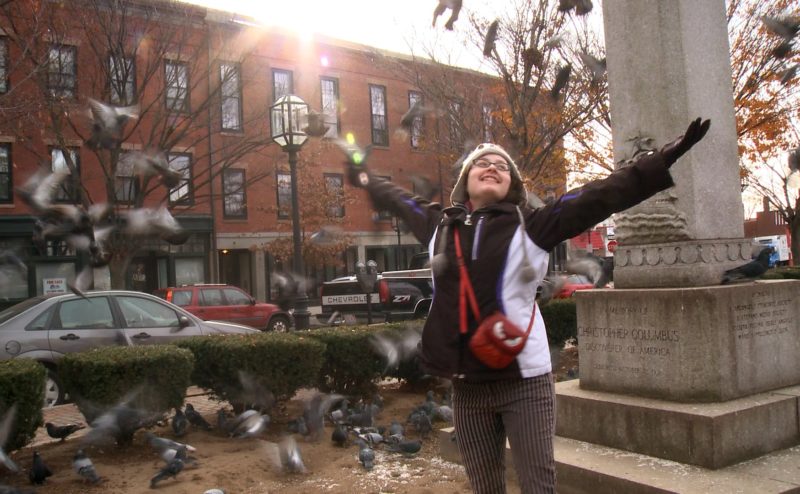
Film Funding | How To's | Kickstart New England | Massachusetts | New England | Reports | Vermont
Crowdfunding Advice from Veteran Filmmakers
Advice and tips from filmmakers on the secrets to success for their crowdfunding campaigns on Kickstarter and Indiegogo.
Written by Casey Stirling | Posted by: NewEnglandFilm.com
NewEnglandFilm.com checks back with filmmakers featured in the Kickstart New England series to find out if their campaigns were successful and what they learned about crowdfunding.
Over the last few years, our Kickstart New England series has highlighted filmmakers with local connections using Kickstarter, Indiegogo, and other crowdfunding resources to fund their projects. Here, we check in with some of our featured filmmakers to find out if their campaigns were successful, what they learned through the crowdfunding process, and the latest updates on their endeavors.
Deterrence
In 2013, Boston University student Jake Bann set up a successful Kickstarter campaign for his thesis film Deterrence (read the original article). Bann sought post-production funding for the film, a fictional story about a young man and his social worker in Roxbury, Massachusetts.
From Jake Bann:
“The campaign went very well. Fortunately for us, raising money was more of a reimbursement project, since we had already paid for most of the movie with credit cards. The money we raised went to paying off that debt and paying the fees to send the film to festivals around the world. Deterrence screened at the Lone Star Film Festival, the Boston Student Film Fest, the Williamsburg International Film Festival, the Orlando Film Festival, and the Arlington International Film Festival.
“The film was also licensed by ShortsHD last year—the same distributor who screens the Oscar-nominated shorts every year. Deterrence may be televised on any of ShortsHD’s channels through DirecTV, Google Fiber, and AT&T U-verse, among others.
“I learned that crowdfunding is an excellent way to raise money for a film, but setting deadlines should never be the orthodoxy by which your indie film is made, especially in post. If there’s no studio hounding down your back, take your time when editing. Revisit the film again and again, so you can come out with the best film possible. And always keep your investors updated.”
True Colors: OUT Youth Theater
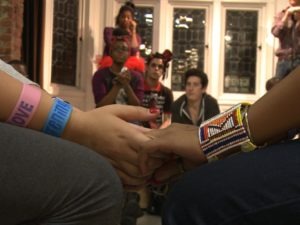 In 2013, Massachusetts filmmaker Ellen Brodsky created a Kickstarter campaign for a documentary following the Boston LGBTQ theater troupe True Colors for a year (read the original article). The campaign was successful, and the project has reached student and community audiences.
In 2013, Massachusetts filmmaker Ellen Brodsky created a Kickstarter campaign for a documentary following the Boston LGBTQ theater troupe True Colors for a year (read the original article). The campaign was successful, and the project has reached student and community audiences.
From Ellen Brodsky:
“We raised $56,400 with our Kickstarter project with 650 backers. The funding was key to finish our nine months of filming True Colors, the LGBTQA theater troupe which created a play about love. We then had nine months of transcribing and editing. We premiered the film at the Santa Barbara International Film Festival in January 2015. Since then the film The Year We Thought About Love has played in over 40 festivals around the world, and has screened at conferences, universities, high schools, and community centers. We have educational distribution with New Day Films New Day Films and sell home DVDs and T-shirts on our website. There is also a free 60-page discussion guide on our website. We have received positive reviews and after a year doing festivals, we are now concentrating on educational and grass roots screenings.
“I think we learned the importance of prep work and teamwork for Kickstarter. We took 3 months of planning – making the video, creating the page, and identifying 80 people who were designated ‘Key Communicators’ before the campaign went live. These 80 people promised to send an email to ten friends, as well as a Facebook message to 10 friends in the first 4 days and the last 4 days of the campaign. We had three of us working on the campaign, and every day we sent personalized thank you notes to all our donors. If we did not know them, we asked how they heard about our film. About 5-6 days before the final day, we divided the number of dollars we had left to raise with the number of donors we had. We sent a note saying something like, ‘If everyone gave $21 more dollars, or found friends to give $21, we would reach our goal.’ This helped a lot!”
Carb-Loaded
 In 2013, filmmakers Lathe Poland and Eric Carlsen reached out for funding for Carb Loaded, a documentary on diabetes in the United States (read the original article). The filmmakers exceeded their $40,000 goal, earning $58,000, and Carb Loaded has since appeared on FMTV, iTunes, Amazon, and Google Play, with plans to launch on Gaiam TV and Hulu in the future.
In 2013, filmmakers Lathe Poland and Eric Carlsen reached out for funding for Carb Loaded, a documentary on diabetes in the United States (read the original article). The filmmakers exceeded their $40,000 goal, earning $58,000, and Carb Loaded has since appeared on FMTV, iTunes, Amazon, and Google Play, with plans to launch on Gaiam TV and Hulu in the future.
Carb Loaded was the team’s first crowdfunding experience, explains Lathe Poland, and looking back on the experience, he writes, “My biggest take away was the importance of having a big social media tribe/presence before you launch the campaign.” The filmmakers spent “over a year building our social media presence and community. But, we didn’t realize how important it would be to the overall success.”
Poland believes filmmakers need a strong social media foundation before launching a campaign: “I think some creatives use sites like KickStarter or IndieGoGo to create a following for their project. In my opinion you need to already have a social media following equal to at least half of your goal (at least in principle).”
Ultimately, Poland advises fellow crowdfunders, “make sure the idea already has a supportive and motivated following that will assist with the much needed energy the project requires.”
An Act of Dog
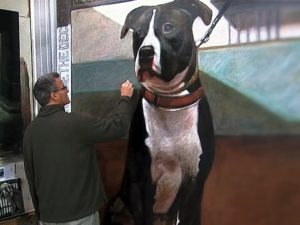 In 2014, we profiled Sagacity Productions’s campaign for An Act of Dog (read the original article). The documentary followed a couple’s journey to adopt a dog and their growing awareness of how many dogs are euthanized in animal shelters around the country.
In 2014, we profiled Sagacity Productions’s campaign for An Act of Dog (read the original article). The documentary followed a couple’s journey to adopt a dog and their growing awareness of how many dogs are euthanized in animal shelters around the country.
The Kickstarter campaign was successful, with the aim of using raised funds for location production, and the filmmakers are currently applying to ITVS for additional funding to complete the film. The project was producer Bonnie Silva’s first time using a crowdfunding campaign, and she says through the experience she “learned that there are perfect strangers in this realm who would be happy to support a project that’s in line with their interests and personal causes. We continue to hear from people who were moved by our campaign.”
Acts of Desperation
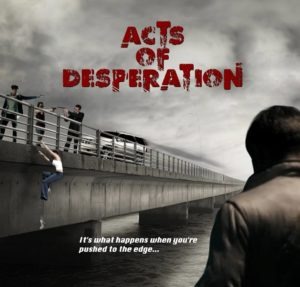 In 2014, Boston filmmaker Nate Illsey launched a Kickstarter campaign for Acts of Desperation, a comic thriller directed by Richard Friedman (read the original article). While the campaign did not reach its goal, Illsey has hopes for the film’s future, and took away some important lessons from the Kickstarter experience.
In 2014, Boston filmmaker Nate Illsey launched a Kickstarter campaign for Acts of Desperation, a comic thriller directed by Richard Friedman (read the original article). While the campaign did not reach its goal, Illsey has hopes for the film’s future, and took away some important lessons from the Kickstarter experience.
From Nate Illsey:
“Unfortunately, the Kickstarter campaign was unsuccessful and the film is more or less stalled at the moment. The director and producers still have it in their queue and plan on making the film, but they’re trying to get a couple other lower budget projects underway first to build up additional hype for the team and hopefully use that to generate more interest and funding in Acts of Desperation. A little disappointing, but I’m still confident it’ll happen eventually.
“However I did learn a pretty big lesson from this whole thing. The team making Acts of Desperation already had a decent budget secured for the film, right around 100k if I remember correctly, but then the scope of the film expanded due to the prominence of some of the cast members and also some added special effects, and so they needed to raise additional funds.
“However, they had already told just about everyone that a budget was secure, so when people saw the Kickstarter campaign launch, they didn’t feel the need to donate as they thought we were already set. It kind of shot us in the foot because a fairly big portion of our would-be donors didn’t think we actually needed the money, and so donations really suffered.
“Long story short, what I learned was never to disclose any secured budget if you’re looking for more money from potential backers. If they don’t think you need it, even with the perks, there’s not much incentive to give. If anything you should overplay how much you need the project to succeed!”
Visually Sound Pictures
In 2014, Massachusetts production company Visually Sound Pictures launched a Kickstarter campaign to support several of its planned projects (read the original article). Rather than focusing on one particular project, the company hoped to raise funds for feature films, comedy shorts, and web series. Ultimately, the campaign did not achieve its fundraising goal.
Explains Jason Fenton, Principal/President of Visually Sound Pictures: “To the best of my determination, our Indiegogo campaign wasn’t precise enough — we were essentially trying to fund a slew of projects for Visually Sound Pictures LLC.”
He believes that “rather than attempting to finance a slate of projects — alienating those unfamiliar with VSP who might not like earlier works — we should’ve marketed a single project and more aggressively targeted a demographic that would’ve supported the content of that particular film/short rather than hoping newcomers would take the financial risk on the company as a whole.”
While this particular campaign did not meet the company’s expectations, with current projects “in limbo,” Fenton says Visually Sound Pictures is “trying to determine if we can self-fund through steadier freelance work or isolate projects, as mentioned above, and strategically target the financing for those through new campaigns.”
Despite the challenges of the campaign, Fenton says, “the experience with Indiegogo as a platform and the support of organizations such as NewEnglandFilm.com were positive ones that encourage us to press forward with future projects, recognizing that there are avenues and groups looking to encourage and support truly independent creative endeavors.”
In Crystal Skin
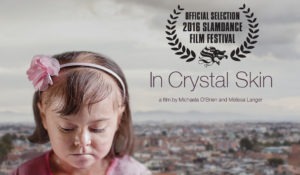 In 2014, filmmaker Michaela O’Brien launched a Kickstarter campaign for her documentary In Crystal Skin (read the original article). The documentary brought the filmmakers to a Colombian orphanage to tell the story of two sisters with the rare skin disease Epidermolysis Bullosa.
In 2014, filmmaker Michaela O’Brien launched a Kickstarter campaign for her documentary In Crystal Skin (read the original article). The documentary brought the filmmakers to a Colombian orphanage to tell the story of two sisters with the rare skin disease Epidermolysis Bullosa.
The campaign was successful, and funding helped cover post-production costs. The team behind In Crystal Skin is currently applying for festivals, and the film was recently featured at the 2016 Slamdance Film Festival.
Brewland
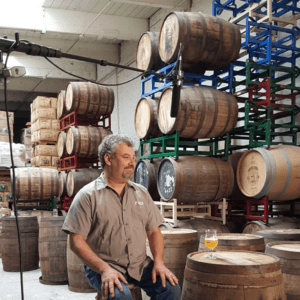 In 2014, director Mike Sills and producer Matt Parola launched an Indiegogo campaign for the documentary Brewland (read the original article). The filmmakers hoped funds would allow them to expand their story about craft beer from Vermont, their original focus, to the rest of the country. While the campaign did not ultimately meet its fundraising goal, the team learned valuable lessons from the experience, and continues to work on the film.
In 2014, director Mike Sills and producer Matt Parola launched an Indiegogo campaign for the documentary Brewland (read the original article). The filmmakers hoped funds would allow them to expand their story about craft beer from Vermont, their original focus, to the rest of the country. While the campaign did not ultimately meet its fundraising goal, the team learned valuable lessons from the experience, and continues to work on the film.
From producer Matt Parola:
“Brewland was the first, and currently only, time our group turned to crowdfunding for a project. We certainly underestimated the whole process of it, assuming our project, support by our interviewees, and a strong social presence within the craft beer scene was going to be enough to propel our project past our, admittedly, very large goal. It started off great, we held a launch party at Harpoon that over 500 people had RSVP’d for (free beer helped) but from there our campaign started to fall short of our expectations for many reasons.
“About 250 people attended, people known and unknown to us, which is a fair ratio of RSVP to attendance, but we only received about 40 donations that night which was only a small percent of what we needed to raise.
“I think two things factored into this. First, we did not ‘sell’ the project to most of the attendees. We were too filled with excitement at having interviewed some of our white whales and at pulling off a major event that, at that point, was turning out quite successful. Second, we had a constant set of technical issues with the laptops we had setup for people to log into IndieGoGo and donate to the campaign. This slowed down the donations and seemed to deter some people from donating. Still, plenty of people were there to support us and many of them did, for which we are grateful.
“Now that our campaign was live we dived into our marketing strategy, which we had planned out prior to launch. Our project focused on Craft Beer and as the fandom of the industry was both strong and growing we felt focusing on that crowd would be the key to success. We had compiled a list of every site that was somehow related to craft beer, probably about 4,000 sites. We divvied them up and started researching and emailing each site individually. This worked well, we got published in quite a few blogs and even a few podcasts. We did provide Press Releases with photos to help them compose. This email blast even led us to getting in touch with some additional folks we wanted to interview. Problem with this strategy is it took almost the entire run of our campaign to reach out to all of them, of which many were defunct, and when they did publish most of them had a small readership base so our exposure was not near the height we needed.
“If we were to launch again we would broaden our outreach to include more then just craft beer sites; lifestyle blogs, food, alcohol, art, documentary, and film sites. We would also reach out to many of the sites well before launch so they would be able to post articles as soon as we went live.
“We should have wrangled more help from our friends, family, crew, and especially our interviewees to post often about the project. We should have grown our social media presence as much as we could before launching instead of growing it from the launch.
“Even though we needed all the money we asked for to get a proper, professionally completed project, we asked for too much which I think deters people from investing. They want to think or see you can make your goal, that it’s not a lost cause. Also, our launch video was lame. Most of us are folks who prefer being behind the camera and that lack of personal connection and message did not resonate with viewers who were not familiar with us. Our video should have been much more personal, stated exactly what the project was going to be, and clearly spelled out our plan.
“The funding we did receive, while nowhere near what we needed, helped us film another round of interviews in Colorado which brought us much closer to completing our film. For this we are grateful to those that donated and cannot wait to deliver the film to them.
“As we stand now, we have finished 95% of our interviews and are working through the edit of the film. We plan on interviewing a few more folks and re-interviewing a few of the very early interviews to fill any additional gaps and change in the industry that has happened during our two(!)-year filming process. It has been a long journey and we still have a long way to go, both in post-production and, most importantly, fundraising.”
Wander, Wonder, Wilderness
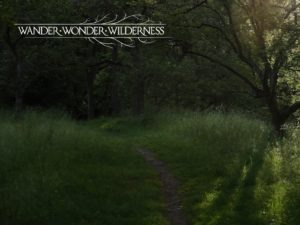 In 2014, Paul Turano led a Boston-based team on an interactive documentary project (read the original article). Turano’s goal was to create a documentary, smartphone app, and website that allowed users to explore and digitally chronicle their experiences in Boston’s “urban wilds” (green spaces).
In 2014, Paul Turano led a Boston-based team on an interactive documentary project (read the original article). Turano’s goal was to create a documentary, smartphone app, and website that allowed users to explore and digitally chronicle their experiences in Boston’s “urban wilds” (green spaces).
The Kickstarter campaign exceeded the filmmakers’ aims, raising over $700 more than the $10,000 goal. It was Turano’s first time using a crowdfunding campaign, but others involved with Wander, Wonder, Wilderness had previous experience with them.
From Project Management Assistant Heather Hoglund:
“Running this campaign allowed us to not only put the project goals into words, but also let us envision where we’d like to see it in one, three, five years from now. In addition, we successfully spread the word about WWW and the campaign opened a lot of doors for collaboration opportunities with other like-minded organizations.
“The challenges of this campaign were, obviously, raising such a large amount of money. It was difficult to convince people to give us more than just a nod of approval for what we were doing. Also, choosing rewards is one of the tougher parts of campaign planning. Since we wanted the majority of the fundraised money to go to project efforts, we had to pick rewards that were digital or easy to mail, all the while making sure our backers felt like they were truly getting something out of donating.
“This might be very specific, but one thing we did that worked really well in this campaign was having strategic donors. These were people we knew who had agreed to donate a relatively large amount of money. We had them donate during different parts of the campaign – halfway through, in the final week, whenever donations were slow, etc. This really helped jumpstart the campaign during typically slow periods and I believe was a big reason we surpassed our goal. The challenge, however, is having people like that in your network.
“The project is continuing to move forward thanks to the funds raised from our Kickstarter campaign. The first component we focused on was the mobile app; with the fundraised money we were able to finish developing it and worked with a group of beta testers to refine it. The app was officially launched in the Apple App store on August 25, 2015. It was recently featured in the Boston Globe.
“Post-campaign, Paul Turano was able to distribute the film component of the project. The WWW film went on to screen at the Salem Film Festival, Athens International Film Festival, New Filmmakers Spring Fest, and the International Kuala Lumpur Eco Film Festival in Malaysia. The film won ‘Best New England Film’ at the Massachusetts Independent Film Festival. Paul has also travelled with and presented the project as a whole to the New England Foundation for the Arts Creative Communities Exchange at Keene State College and at the Hacking Arts Conference at MIT.
In addition the team started to work with students, like the Institute of Contemporary Art teens, on exercises that got them out into green spaces in the city. Paul also conducted a day long workshop and location-based learning exercise with high school students who are participating in the Olmsted National Historic Site’s Stewards of the Future program. Moving forward, the team will be focusing on using the WWW project as an educational tool for students throughout the city.”
advice, crowdfunding, financing






